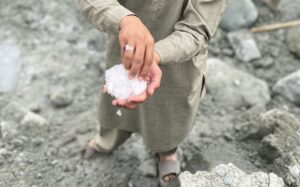Cantonati, M.
Piana, L.; Angeli, N.; Dinelli, E.; Filippini, M.; Gargini, A.; Greggio, N.; Mustoni, A.; Petraglia, A.; Atia Saber, A.; Spitale, D.; Tomaselli, M.; Tromboni, F.; and Segadelli, S.
Abstract/Description
Springs are keystone ecosystems with unique characteristics, that are particularly numerous and diversified in mountain landscapes. Despite their enormous importance for nature conservation, they are underrecognized as natural systems, pervasively used and often destroyed, to an extent that there is a long-time ongoing silent global crisis of spring demise. In the frame of our efforts to foster the recognition of springs as ecosystems, in a case study in the Northern Apennines (Emilia-Romagna Region, particularly the Tuscan-Emilian Apennine National Park), we identified five main strategic zones / main aquifer types to support spring conservation in the Emilia-Romagna Region: ophiolithic ridge, turbidite sandstone ridge, Triassic karst, shallow-marine arenite springs, and fontanili (semi-natural lowland springs typical of the Po floodplain). In each of these strategic zones, after hydrogeological characterization, at least five springs were surveyed and sampled for hydrochemistry, selected indicators and biota (benthic diatoms developing on the main substrata and possible dominant macroalgae and cyanoprokaryotes, vegetation including bryophytes and with cover estimation of the species). These data will be used to refine the definition of the five strategic zones. Moreover, representative springs were selected for a long-term ecological research programme, that builds on a long-term monitoring of springs (and high-elevation lakes) in the Adamello-Brenta Nature Park which is collecting chemical and biological data on an annual basis since about 30 years. The springs in the Northern Apennines were selected in a way to enhance comparability with those of the south-eastern Alps in terms of morphological type, discharge, elevation, mineralization level etc. The new programme (starting 2025) will allow to sample ten springs (5 in the Alps and 5 in the Apennines) every five years, complemented by the sampling of a core group of 5 springs (2 Alps, 3 Apennines) in the central year of the five-year period. Preliminary data suggest relevant trends in discharge (Apennines), temperature and alkalinity (Alps). The main goal is to keep using springs as sentinel environments of the effects of environmental change and land-use, in a time of ever-increasing threats due to climate change effects and augmented exploitation of aquatic ecosystems.


